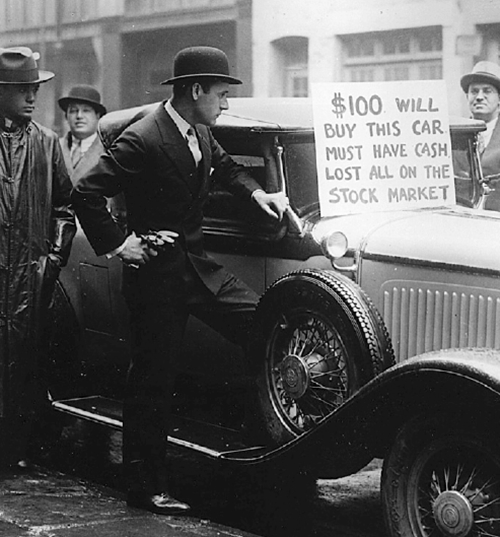THE 1929 WALL
STREET CRASH
G'day folks,
A record 12,894,650 shares were sold on October 24 1929, as panic gripped the Wall Street stock market in New York. It was to be known as Black Thursday, but far worse was to come.
On October 28 the market went into freefall with losses as high as
$5billion being reported. The next day – Black Tuesday – prices
completely collapsed amid panic selling, triggering losses of between
$10-$15billion. Millions of Americans saw their life savings disappear.
Prices continued to drop, leading to losses of a staggering $30billion
by mid-November. The market hit rock bottom on November 23 after which
prices began to stabilise, meaning that at last the 1929 Wall Street
crash was over. But it took 23 years for the market to recover.
It all came about after a huge economic boom enjoyed during the “Roaring
Twenties” and the “Jazz Age.” It was a time of “spend, spend, spend”
bolstered by easy credit schemes and widespread borrowing by consumers.
It was also a time of “live now, pay later” and the stock market was no
exception. Brokers encouraged buying shares “on margin”, which meant
using borrowed money.
As a result, Wall Street saw an extended period of rising share prices, known as the Long Bull Market.
Inevitably, the chickens came home to roost as the economy began to
contract. Professional investors then started to sell, causing prices
slowly to fall. As they saw what was happening smaller investors,
concerned about paying off their loans, also began to sell. So prices on
the market fell even further, generating rising panic that led to the
Wall Street Crash.
In turn, this brought about the Great Depression with numerous bank
closures, mass unemployment, homelessness, hunger and despair for
millions of Americans. Peaking in 1933, it would last for ten years
until the Second World War broke out in 1939.
This was not the first time that Wall Street had been plunged into
turmoil. The first crash of the New York Stock Exchange, known as the
Panic of 1901, was caused by a fight for control of the Northern Pacific
Railroad. As businessmen E.H. Harriman and James J. Hill battled for
the firm, stocks in dozens of other rail companies tumbled, eventually
dragging down the whole market.
There were further Wall Street crashes in 1907, 1937, 1962, 1987, 1989,
1997, 2000, 2002, 2007, 2008, 2010, 2015 and, of course, the worldwide
market slump caused by the coronavirus COVID-19 in 2020.
Long before any of these, the first recorded financial crash came in 1637 when Tulip Mania reached its climax in Holland.
The first tulip bulb was imported into Holland from Turkey in 1593 and
after a few years they became a status symbol for the country’s upper
classes.
As demand grew, so did the prices and people began to buy and sell tulip
bulbs just to make money. As stories spread of huge profits to be made,
more and more people jumped on the bandwagon causing the prices to
skyrocket.
In 1633, a single bulb of Semper Augustus was selling for an
unbelievable 5,500 guilders (about $3,000). By the first month of 1637,
this had doubled to 10,000 guilders. Historian Mike Dash in his 1999
book, Tulipomania: The Story of the World’s Most Coveted Flower and the
Extraordinary Passions It Aroused, puts this sum in context:
“It was enough to feed, clothe and house a whole Dutch family for half a
lifetime, or sufficient to purchase one of the grandest homes on the
most fashionable canal in Amsterdam for cash, complete with a coach
house and an 80ft (25m) garden – and this at a time when homes in that
city were as expensive as property anywhere in the world.”
The buying and selling of bulbs usually took place in taverns but the
trading disappeared almost overnight in February, 1637. Most speculators
could no longer afford to purchase even the cheapest bulbs and an
auction had failed to produce any buyers.
As doubts grew that the prices were sustainable demand disappeared and
the bulbs tumbled to a tenth of their former values. Fear and panic
spread quickly, causing the bubble to burst in just a few days.
The tulip bulb crash threw the Dutch economy into economic depression that lasted for many years.


No comments:
Post a Comment